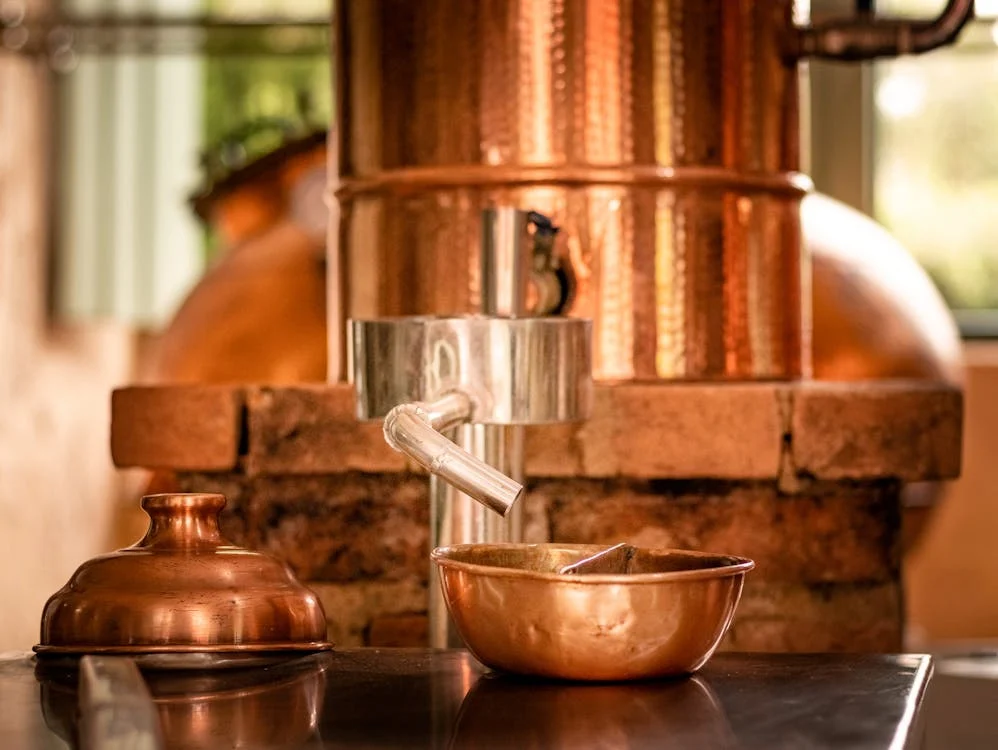
Imagine a small, rustic distillery tucked away in Utah’s Uinta mountains. The air is crisp with hints of fermenting grain and aging whiskey. Inside, a dedicated artisan tends to the copper still, crafting small batches of handmade spirits with care. Each bottle reflects the maker’s dedication and knowledge of the land.
This romantic image is likely what comes to mind when we hear “craft spirits.” We envision devoted producers pursuing their passion for making unique, quality products that stand in contrast to those mass-produced by big-name brands. It’s no wonder, then, that the craft spirits industry has seen such impressive growth in recent years.
But how accurately does this idealized image reflect the reality experienced by craft distillers? In a recent study, forthcoming in Qualitative Sociology, my colleague Eylül Yel and I shed new light on this question, revealing a landscape far more complex than this idealized vision suggests.
In our research, based on interviews with twenty-six craft sector actors, including distillery owners, in-store servers, tour guides, bar operators, and brand representatives in Utah, we discovered a web of pressures and constraints that make maintaining an authentic craft identity surprisingly difficult. From legal battles over trademarks to the harsh realities of distribution and regulation, craft distillers face obstacles that often force them to compromise their ideals.
One significant challenge identified in our study is the impact of legal pressures on brand identity. We spoke with a number of distillers who have been forced to rebrand their products because of trademark disputes with large companies. This process can be damaging to a company’s carefully cultivated identity. Market forces also significantly influence product offerings. Many producers resort to making vodka or gin because of the faster production and sales cycle rather than focusing on their preferred spirits. This decision is often driven by the need to generate quick revenue rather than a genuine passion for these products.
Distribution presents another hurdle. Smaller brands struggle to secure shelf space and distributor attention in a market dominated by well-established national brands with substantial resources. This disparity in market access creates a substantial barrier for craft distillers trying to grow their businesses. Perhaps most concerning were our findings regarding regulatory challenges. Through our attendance at Department of Alcoholic Beverage Control meetings and interviews with distillers, we uncovered a bureaucratic environment that often favors large producers over small craft operations. This imbalance creates additional barriers for craft distillers trying to establish themselves in the marketplace.
What’s more, the presence of “inauthentic” craft spirits in the market further complicates matters. We identified a phenomenon that distillers call “fakers” in the industry—companies that market industrial spirits as craft products. This practice not only confuses consumers but also compromises the meaning of “craft” in the spirits industry, making it harder for genuine craft distillers to differentiate themselves.
To address these challenges, our research reveals that craft distillers employ various strategies. Some leverage local history or unique cultural elements to differentiate their brands. Others focus on consumer education, utilizing distillery tours to demonstrate the authentic craft process. However, the study indicates that many distillers find themselves compelled to compromise their ideals to remain competitive. This often involves adopting more corporate-style strategies or marketing approaches that may diverge from their brands’ true origins.
Interestingly, the research demonstrates a growing overlap between craft and corporate identities in the spirits industry. Large companies engage in “craft-washing” by acquiring craft brands or emulating craft marketing tactics. Concurrently, some craft producers are becoming more accepting of corporate ownership or “selling out” as market realities set in.
My colleague and I began this project expecting to find a clear divide between craft and corporate spirits. However, our research uncovered a much more complicated picture that challenges many assumptions about authenticity in the craft spirits industry.
Our findings call into question the almost ubiquitous, idealized image of the craft spirit industry that most consumers think of today. It’s not all speakeasies, quaint mountain moonshine, and passionate upstarts. Behind the scenes, small-batch distillers battle big corporations, ambiguous regulations, and the pressure to cut corners. To most consumers, though, presenting as “craft” is still synonymous with being “authentic.” Far from fixed, authenticity is a fluid concept subject to ongoing negotiation and contestation. Our study highlights the need to more carefully examine how authenticity is defined and valued across industries.
For craft spirits enthusiasts, this work emphasizes the importance of scrutinizing marketing claims and developing a deeper understanding of the products they consume, including the methods and ingredients used in their manufacturing process. For novice craft distillers, it offers a reminder of the challenges of maintaining an authentic identity in a rapidly changing industry.
Read More:
Marie Sarita Gaytán and Eylül Yel. “Against the Grain?: Authenticity and the Craft Alcohol Industry” in Qualitative Sociology 2024.
Image: Tiago Antonio via Pexel
